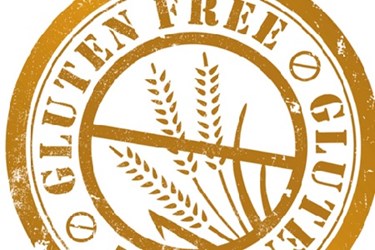Food Makers Are Cashing In On Gluten-Free Demand
By Isaac Fletcher, contributing writer, Food Online

The demand for gluten-free labeling on nearly every variety of food product is incentivizing food producers to broaden their gluten-free portfolio.
Over the last few years, gluten-free dieting has emerged as a dominant force for health- consumers. Having historically only been found on the shelves of specialty stores, gluten-free products can now be found in nearly every mainstream grocery store. With a strong following advocating the benefits of a gluten-free lifestyle, many food producers have recognized in this trend a significant financial opportunity.
Food manufacturers, both large and small, are releasing a slew of gluten-free products in order to cash in on this expanding market. For example, General Mills is releasing gluten-free versions of its popular Cheerio products next month. Small amounts of gluten can often end up in non-glutinous foods through cross-contamination during the production process, and manufacturers have an increased interest in keeping these foods truly gluten-free. However, as the gluten-free movement has expanded, so too has the liberty of gluten-free labeling. In many stores, it is not uncommon to see products that have never had any gluten content — eggs, poultry, meat, vegetables, etc. — being labeled as gluten-free in order to gain consumer interest.
Although it may seem unnecessary to label such products as being free from gluten, market data indicates that this sort of “free from” labeling resonates with many consumers. Accordingly, many food producers are jumping at the chance to add gluten-free labels to any product that is eligible under current labeling regulations.
Related: Understanding Food Label Regulations Of The U.S., EU, And China
Over the five years leading up to 2014, sales of gluten-free products grew 34 percent annually. Although growth is expected to slow slightly through 2019, the annual rate of growth is still estimated to be a respectable 19.2 percent with total sales predicted to reach $2.34 billion. Not only is the market expected to continue is dramatic expansion, consumers are also willing to pay a higher price for gluten-free items, giving manufacturers further incentive to jump aboard the gluten-free trend.
Consumers of gluten-free foods can be broken down into three general categories:
- Those who have been diagnosed with celiac disease.
- Those who have identified gluten as a source of dietary sensitivity
- Those who have embraced gluten-free as a weight-loss strategy.
For consumers suffering from celiac disease, accurate gluten-free labeling is vital. However, a 2014 Mintel study reveals that 82 percent of consumers who eat gluten-free foods have not been diagnosed with celiac disease, and 44 percent eat gluten-free for reasons other than intolerance or sensitivity to gluten.
Regardless of motivation, consumers have demonstrated that the demand for gluten-free foods will remain healthy for the foreseeable future. The willingness to pay a premium for foods labeled gluten-free, regardless of whether or not gluten could possibly be present in the first place, is driving many food producers to capitalize on this lucrative market opportunity.
